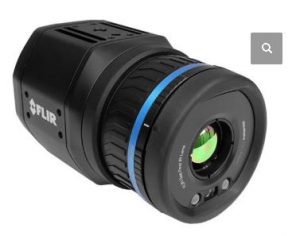In recent years, thermal cameras have emerged as indispensable tools across various industries, revolutionizing the way we perceive and interact with our environment. Utilizing advanced infrared technology, these cameras detect and visualize thermal energy emitted by objects, enabling users to identify temperature variations and anomalies that are invisible to the naked eye. From industrial inspections to medical diagnostics and beyond, thermal cameras offer a multitude of applications and benefits that continue to shape diverse fields.
Understanding Thermal Imaging Technology

At the heart of thermal cameras lies thermal imaging technology, which operates on the principle of capturing and translating infrared radiation emitted by objects into visible images. Unlike conventional cameras that rely on visible light, thermal cameras detect heat signatures emitted by objects, converting them into thermal images known as thermograms. Each pixel in a thermogram represents a different temperature value, allowing users to analyze temperature differentials with precision.
Applications Across Industries
Industrial Inspections: Thermal cameras play a crucial role in industrial settings for preventive maintenance, detecting equipment malfunctions, and identifying potential hazards. By pinpointing temperature irregularities in machinery, electrical systems, and infrastructure, thermal imaging helps prevent costly breakdowns and ensures workplace safety.
Building Diagnostics: In the construction and building maintenance sector, thermal cameras are invaluable for detecting energy leaks, moisture intrusion, and structural defects. Building inspectors use thermal imaging to assess insulation efficiency, identify water damage, and prioritize repairs, leading to improved energy efficiency and structural integrity.
Security and Surveillance: Thermal cameras enhance security and surveillance systems by providing clear visibility in low-light conditions and adverse weather. With the ability to detect human and animal heat signatures, thermal imaging enables effective perimeter monitoring, intruder detection, and search and rescue operations.
Medical Diagnosis: In the medical field, thermal cameras facilitate non-invasive diagnostics and patient monitoring. Thermography, a technique based on thermal imaging, enables healthcare professionals to visualize temperature variations associated with inflammation, circulatory disorders, and other medical conditions, aiding in early detection and treatment planning.
Wildlife Conservation: Thermal cameras are instrumental in wildlife research and conservation efforts, enabling biologists to study animal behavior, track migratory patterns, and monitor endangered species. Thermal imaging provides valuable insights into nocturnal animals’ activities and habitats, facilitating conservation initiatives and biodiversity preservation.
Key Benefits of Thermal Cameras

Enhanced Visibility: Thermal cameras offer superior visibility in low-light conditions, fog, smoke, and dust, allowing users to see beyond the limitations of human vision. This enhanced visibility is especially advantageous in hazardous environments and remote locations where conventional cameras may fail.
Early Detection of Anomalies: By detecting temperature differentials and hotspots, thermal cameras enable early detection of potential hazards, equipment failures, and safety risks. This proactive approach to maintenance and inspection helps minimize downtime, reduce repair costs, and prevent accidents.
Non-Invasive Inspection: Unlike invasive testing methods that require physical contact or dismantling of equipment, thermal imaging offers non-destructive inspection capabilities. This non-invasive approach minimizes disruption to operations, reduces downtime, and extends the lifespan of assets.
Cost-Effective Solutions: Incorporating thermal cameras into maintenance programs and diagnostic protocols can lead to significant cost savings over time. By identifying issues before they escalate, organizations can avoid costly repairs, optimize energy efficiency, and maximize operational performance.
Versatility and Adaptability: Thermal cameras are versatile tools that can be deployed across diverse applications and industries, from industrial facilities and commercial buildings to medical clinics and wildlife reserves. Their adaptability to various environments and conditions makes them indispensable assets for professionals in different fields.
Conclusion:
In conclusion, the power of thermal cameras lies in their ability to reveal hidden insights and provide actionable data across a wide range of applications. Whether used for industrial maintenance, building diagnostics, medical imaging, or wildlife conservation, thermal imaging technology continues to push the boundaries of innovation and redefine the way we perceive our surroundings.
With their unmatched visibility, early detection capabilities, and cost-effective solutions, thermal cameras have become indispensable tools for professionals seeking to optimize performance, enhance safety, and unlock new possibilities in their respective industries.


